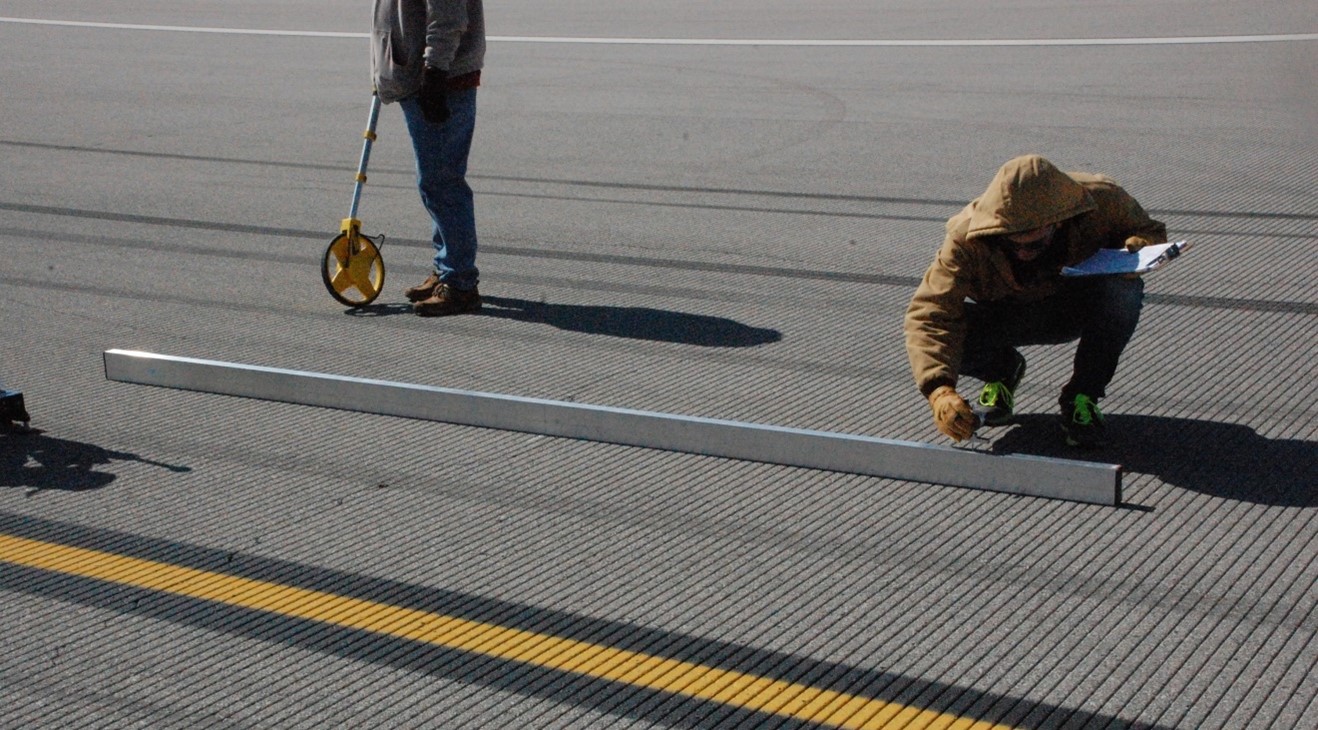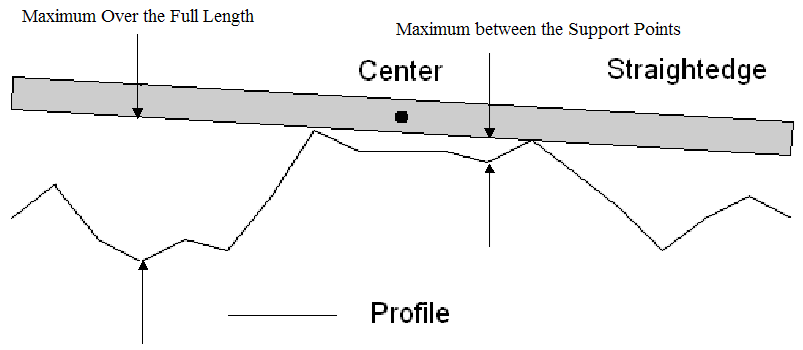Straightedge

Straightedge Testing in the Field (Click to Zoom)
The straightedge is a simple device used to measure pavement roughness. It is recommended in the FAA standards for quality control/ quality assurance (QC/QA) testing of new or rehabilitated pavements. Deviations beyond the QC/QA limit can impede surface drainage, which may contribute to aircraft hydroplaning.
A straightedge and gauge are used together to perform a test. The straightedge is placed on the pavement to provide a reference line. The gauge is used to measure the maximum vertical difference between the pavement surface and the bottom of the straightedge. For accuracy, the gauge is marked with at least 1/16 inch increments. Straightedges vary in standard lengths from 6 to 16 feet, with a 12-foot straightedge currently being the standard size used for testing. Use of a longer straightedge generally increases the measured height difference. According to current FAA standards, tests should be performed at an interval of half the length of the straightedge.
Straightedge testing has several measuring methods that produce different results. With the straightedge laying on the pavement, it is supported by the two highest peaks, with deviation from these maxima falling below the straightedge. The supports are not typically at the ends of the straightedge, which leaves overhang at the ends. The deviation can be measured considering only the length between the supports (excluding overhangs), or alternatively below the entire straightedge length regardless of support locations. The current FAA limit is less than 1/4 inch vertical deviation for new construction, measured between the supports, using a 12 foot straightedge.

Straightedge Measuring Methods (Click to Zoom)
The major reason a straightedge is recommended in construction testing is for its simplicity; it is practically impossible for it to break down or stop functioning properly. Likewise, operation is straightforward and requires minimal training. In addition, a straightedge can be used to determine maximum rut depth for transverse profiles.
Return to NDT Technology Overview